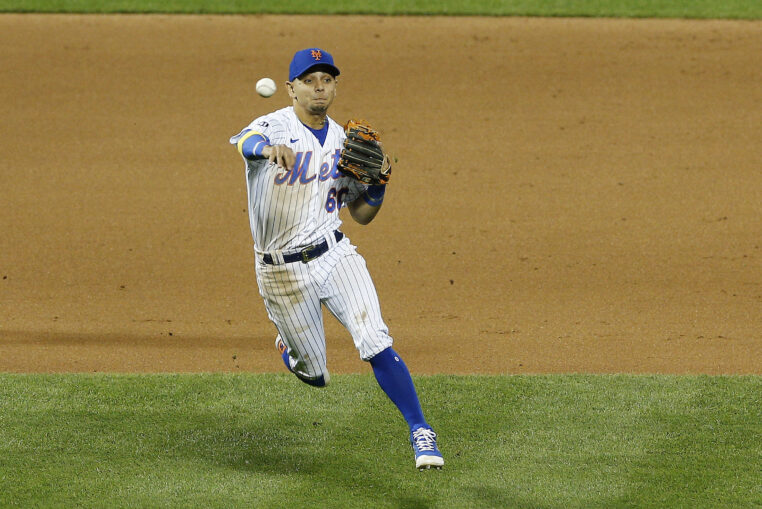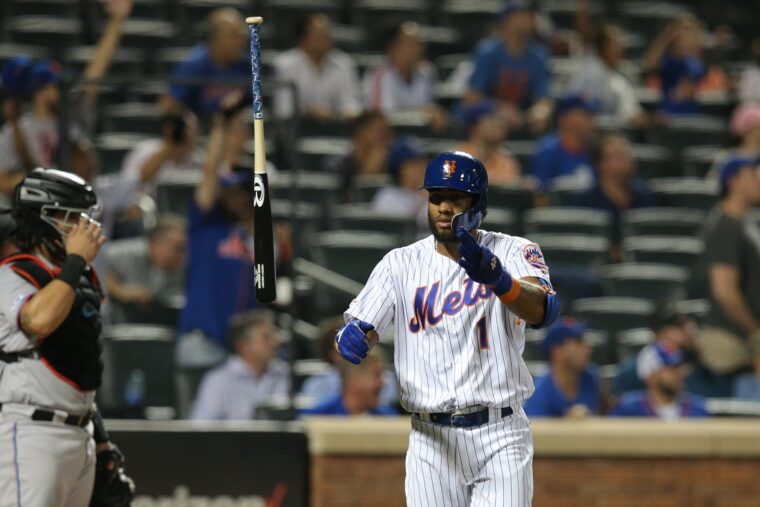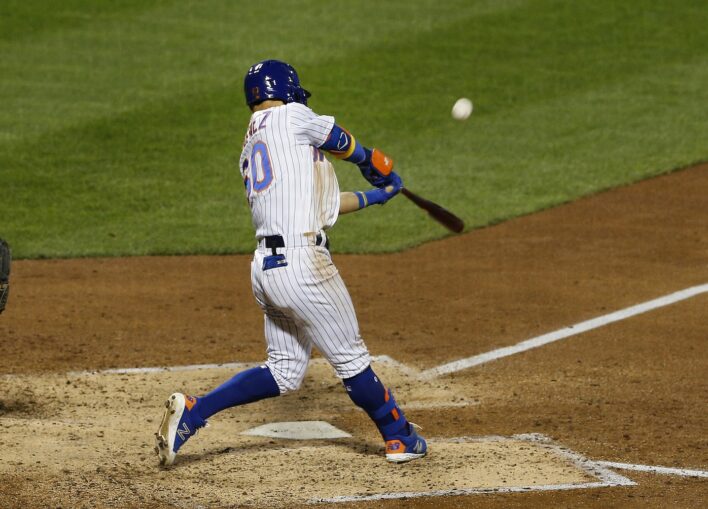
Following the best performance of his career, the New York Mets were confident shortstop Amed Rosario would be able to carry his impressive results into this season. Unfortunately, the opposite has occurred for the 24-year old, as he has become a major liability in the field and at the plate over halfway through the 2020 campaign.
Considered a defensive-first player earlier in his career, no one expected Rosario to arrive at the major league level and break the rookie home run record. With that said, there was some belief the right-hander would be able to hit for contact and provide above-average defense on the left side of the infield. Well, neither of those things have happened during his fourth season in the majors.
After hitting 15 home runs, 72 RBI’s, and a slashing line of .287/.323/.432/.755 in 2019, the 6-foot-2 shortstop has struggled mightily, producing career-lows in home runs (three), ISO (.119), BABIP (.275), wOBA (.253), AVG (.229), OBP (.243), SLG (.349), OPS (.592), walk rate (1.8%), LD rate (16.9%), FB rate (26.5%), wRC+ (59), and fWAR (-0.1) through 111 plate appearances.
To make matters worse, the former No. 1 top prospect within the Mets’ minor-league system is currently tied for the worst DRS (-4) among all qualified shortstops in the majors. If this season was played over a full 162-game schedule, his DRS would prorate to an alarming -10.8, which is less than ideal for someone who was nearly moved to the outfield last season.

Despite these troubling results, manager Luis Rojas still won’t commit to removing Rosario from the starting shortstop position, although, his recent actions speak much louder than his words. Seemingly taking over the starting role, rookie Andres Gimenez appears to have jumped to the top of the team’s infield depth chart, as he has started at shortstop in each of the last four games.
While most experts questioned the idea of having Gimenez break camp with the team at the end of spring training 2.0, that plan has actually worked out so far, as the youngster is contending for the National League Rookie of the Year award. Even if the 22-year old doesn’t capture the title, and there’s a good chance he will, becoming the everyday starter as a rookie would be a solid second-place prize.
Exceeding his expectations at the plate, the left-handed batter has recorded one home run, eight RBIs, .333 BABIP, .325 wOBA, 5.6% walk rate, 18.9% strikeout rate, 21.9% LD rate, 34.4% FB rate, 32.8% hard-hit rate, 107 wRC+ score, 0.7 fWAR rating (fourth-highest among all qualified rookies), along with a slashing line of .293/.344/.402 over his 80 plate appearances.
While Gimenez has been surprisingly productive at the plate, his stellar defense certainly outweighs his results in the batter’s box. Splitting time between three positions, the versatile infielder has spent the majority of his time at shortstop and has shown to be the superior defender over Rosario, which hasn’t shocked anyone at this point.
Over his 106.0 innings this season, the right-handed throwing shortstop hasn’t committed a single error, producing a 1 DRS (tied for fifth-highest), 0.9 UZR (tied for fifth-highest), and a 16.9 UZR/150 (second-highest) among all shortstops who’ve played at least 100 innings this season.

Considering Gimenez has been outproducing Rosario through 42 games and with the Mets just one game shy of the final Wild Card spot, they need to continue putting their top players out of the field and that includes the Venezuela native. Regardless of his lack of experience in the majors, the 5-foot-11 shortstop has proven he deserves additional playing time and his performance could potentially help his team climb back into a playoff spot.
Showcasing his timely hitting in two of the past three games, the speedy infielder has produced runs in three of his last 13 plate appearances, including his two-RBI single on Sunday against the Philadelphia Phillies. Utilizing his impressive sprint speed (28.7 feet per second), he has also been able to make an impact on the bases, resulting in seven stolen bases (tied for fifth-most in the majors).
With the Mets owning the third-worst DRS (-17) in the majors, Gimenez’s defense in a starting role would definitely help his team improve that metric through the remainder of the season. As a result, they would likely allow fewer runs and feature outstanding run prevention within their infield as they attempt to make a late postseason run.
So with Gimenez becoming the everyday shortstop, where does that leave Rosario? Well, he’s certainly in a tough spot and there likely isn’t an easy solution to his problem. Looking to find a new position, it would make a ton of sense to resume his transformation as an outfielder, preferably in center field.
In 2017, the struggling shortstop’s sprint speed (30.1 feet per second) sat in the top one percent of the major leagues. While he’s lost a step or two over the last three seasons, creating a sprint speed of 28.7 feet per second in 2020, he still possesses enough quickness to have success in the outfield. But, the Mets can’t afford to allow any critical errors during this pivotal stretch of the season, so moving him to a new spot early in September probably isn’t the greatest idea. Still, that move seems inevitable.
Considering Rosario will become eligible for arbitration this offseason, it’ll be very interesting to see if he’s still on the Mets’ roster by the start of next spring. One thing is for sure, it seems his time as the starting shortstop has come to an end and his future will likely come as an outfielder.















